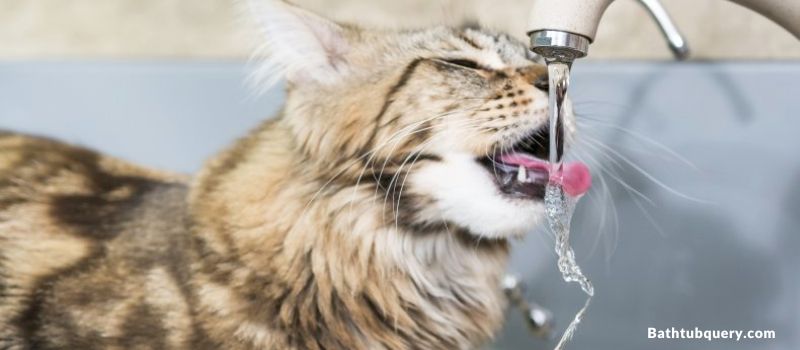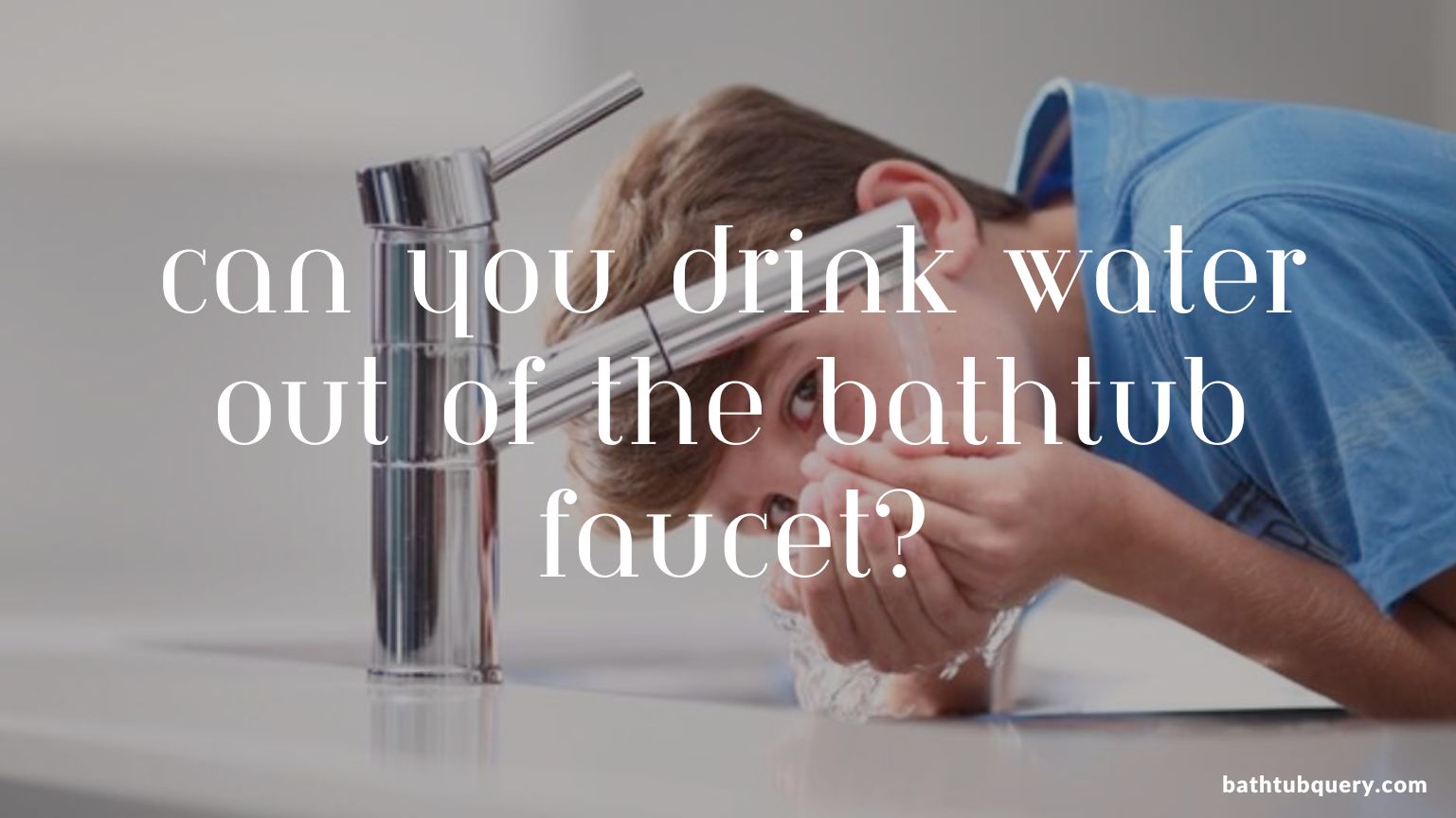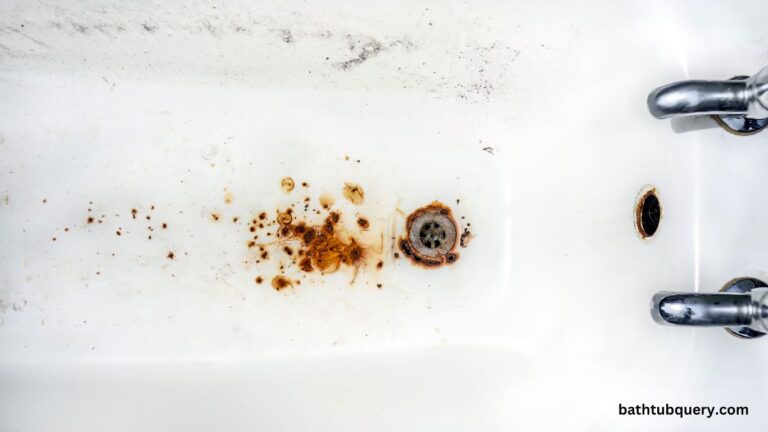Can You Drink Water Out of the Bathtub Faucet?
When you’re thirsty and there’s a tub full of water right in front of you, it can be tempting to just cup your hands and take a sip. But should you actually drink from the bathtub faucet?
Let’s take a closer look at the safety concerns, risks, and best practices around using bathtub water as an emergency drinking source.
Is It Safe to Drink from the Bathtub Tap?
Yes, you can drink water from a bathtub faucet as long as the water source is safe and clean. The key points are:
- Drinking bathtub water is safe if the water comes from a clean, safe municipal source.
- Bathtubs connected to public water systems provide water that is treated and tested regularly.
- Before drinking, run the bathtub faucet for a minute to flush out any stagnant water in the pipes.
Significant Risks Associated With Drinking Bathwater:
- Bacteria and contaminants: Over time, bathtubs can accumulate dirt, soap scum, hair, skin cells, and mineral deposits. This environment can breed potentially harmful bacteria like E. coli, salmonella, legionella, and others that can make you sick if ingested.
- Lead and other metals: Old pipes and plumbing fixtures may contain lead, copper, or other metals that can leach into standing water. Ingesting lead is particularly dangerous and can cause lead poisoning.
- Chemical residues: Traces of soap, shampoo, bath salts, and cleaning products may be lingering in the tub and pipes. These chemical residues could be toxic if consumed.
So clearly, there are some very real risks associated with drinking bathtub water or even bathroom tap water. The danger is even higher for those with compromised immune systems, open cuts or sores, or chronic illnesses.
How Clean Is Bathtub Water?
To understand the risks of drinking from the tub, it’s important to consider how clean the water really is. Here are some reasons why bathwater may contain dangerous contaminants:

- Bathtubs can develop biofilms – slimy buildups of bacteria and mold – especially around the drain. These contain pathogens.
- Without thorough scrubbing, soaps, oils, cosmetics, and dead skin cells can leave residues in the tub.
- Hair and other debris often wind up in tubs, which can carry germs.
- Stagnant water in pipes may contain heavy metals and breed bacteria.
- Bath toys, loofahs, and sponges left in tubs are breeding grounds for germs.
- Scratches and cracks in the tub’s surface can harbor mold and bacteria
- Mineral deposits from hard water may contain heavy metals like lead.
In other words, bathwater is far from sterile and may contain many undesirable contaminants. Drinking it is not recommended under normal circumstances.
Safety Measures for Drinking Bathtub Faucet Water
| Safety Measures | Actions |
|---|---|
| Clean the Bathtub | Use a mild cleaner |
| Run the Water | Flush for a few minutes |
| Boil the Water | Kill bacteria and harmful substances |
Could Drinking Bathtub Water Make You Sick?
Consuming contaminated bathwater puts you at risk for a number of illnesses, including:
- Gastrointestinal illness: The most common are diarrhea, vomiting, and nausea from bacteria or viruses.
- Respiratory illness: Legionella bacteria can cause Legionnaire’s disease, a severe form of pneumonia.
- Lead poisoning: Lead ingestion can cause muscle weakness, brain damage, hearing loss, and other problems, especially in children.
- Chemical poisoning: Soap, shampoo, and cleaning product residues could make you ill if ingested.
- Infection: Bacteria entering through cuts or sores in your mouth can cause localized infections.
Some pathogens and toxins that may be present in bathtub water can have life-threatening consequences if consumed. At minimum, drinking dirty bathwater can give you an unpleasant stomach bug.
When Is It Okay to Drink from the Tub Faucet?
Now that you know the significant risks of drinking bathtub water, is there ever a scenario when it’s considered safe?
The answer is a very cautious yes. In emergency situations with no other water sources available, drinking from the tub may be necessary as a last resort.
However, you should only drink bathwater if you take proper precautions to reduce contamination risks:
- Clean tub thoroughly with disinfectant – Scrub and sanitize tub to remove debris
- Flush pipes – Let tap water run for several minutes first
- Use fresh water – Fill tub just before drinking, with no bathing
- No open wounds – Avoid if you have cuts inside mouth or lips
- Treat or filter water – Boil, bleach, or filter before drinking
With the right precautions, bathtub water could be safe for temporary emergency use only. But it’s certainly not advisable on a daily basis.
Tips for Safer Drinking from the Tub
If faced with an emergency where tap water is not available, you can take steps to minimize the risks of drinking from the bathtub:
- Flush out the pipes first by running the tub water for a few minutes. This clears out any stagnant water sitting in the pipes, which may contain contaminants.
- Thoroughly scrub and sanitize the tub before drawing the water. Use a strong bathroom cleaner and rinse thoroughly.
- Only fill the tub right before drinking – don’t bathe in it first. Try to avoid adding any bath products like bubble bath.
- Consider boiling the water for 1 minute before drinking it to kill any bacteria present.
- Add 8 drops of bleach per gallon of water and let sit for 30 minutes before drinking as an emergency disinfection method.
- Use a water filtration system or portable filter if possible for additional protection.
Taking these precautions provides a higher level of safety if you have no choice but to drink from the tub in an emergency. But treat the water with caution, as you still can’t guarantee it’s pathogen-free.
Methods to Disinfect Bathtub Water
If drinking bathtub water is your only option, you can take steps to disinfect it:
- Boiling: Bring water to a rolling boil for 1 minute. This kills most viruses, bacteria, and parasites.
- Bleach: Add 8 drops (about 1/8 teaspoon) of bleach per gallon of water. Let it sit for 30 minutes before drinking. Bleach kills many contaminants.
- Filtering: Use a water filter designed for camping or emergencies to remove bacteria and sediments. Look for a 0.1 or 0.2 micron filter.
- Distillation: A solar still or distillation kit can fully disinfect water by evaporation and condensation.
- Purification tablets: Add one Iodine or Chlorine Dioxide tablet per quart and wait 30 minutes before drinking.
While not guaranteed to make the water 100% safe, these emergency disinfection methods significantly reduce the risk of becoming sick from drinking contaminated bathwater.
Best Practices for Drinking Bathtub Water
Under normal circumstances, drinking directly from the bathtub should be avoided. But in an emergency situation, here are some best practices to follow:
- Only use as a last resort when no other water source is available.
- Clean and sanitize the tub thoroughly before drawing water.
- Flush the pipes by running the water for a few minutes first.
- Use fresh water – don’t use a tub you just bathed in.
- Treat or filter the water using boiling, bleach, a filter, etc.
- Avoid drinking if you have any open cuts or sores, or a weakened immune system.
- Do not drink if the water has an odor or looks dirty or soapy.
Drinking bathwater should only be done out of necessity in a dire emergency. Take steps to purify it to lower your risk of illness. But avoid drinking it if you have any doubts about its cleanliness or safety.
When to Exercise Caution
There are certain high-risk groups that should always exercise extreme caution about drinking bathtub water:
- Young children have underdeveloped immune systems and are more vulnerable to contaminants.
- Elderly individuals may also have weakened immune defenses.
- Pregnant women should avoid ingesting bacteria, viruses, metals, and other toxins that can pass to the fetus.
- Those with compromised immunity from chronic illnesses, cancer treatment, HIV/AIDS, etc. are at higher risk of falling severely ill from contaminated water.
- Anyone with open cuts, sores, or lesions inside the mouth or lips provides an entry point for pathogens to infect the bloodstream.
If you fall into a high-risk group, avoid drinking bathtub water, even in an emergency, if at all possible. Seek alternative water sources. At a minimum, be sure to thoroughly treat any bathwater before considering drinking it.
Conclusion: Bathtub Water as an Emergency Drinking Source
While far from an ideal option, drinking water from the bathtub faucet may be necessary as a very last resort in certain emergency situations when regular tap water is unavailable.
However, bathwater poses significant risks of illness due to contaminants like bacteria, viruses, heavy metals, and chemical residues. Only drink bathtub water if you thoroughly clean and sanitize the tub first and disinfect the water via boiling, filtration, or other methods.
Those with weakened immune systems and open cuts or sores should avoid drinking bathwater altogether if possible due to the high risks. Pregnant women, young children, and the elderly should also exercise extreme caution.
Ultimately, while the bathtub tap can provide an emergency source of hydration, it should only be used as a temporary last resort until you regain access to safer drinking water. Carefully weigh the risks and utilize disinfection methods before consuming any bathwater. But your best bet is to seek alternative emergency water sources first before resorting to the tub.
Related articles:
- Can You Change the Faucet on a Bathtub?
- Can I Use a Kitchen Faucet for Bathtub? A Practical Guide
- Are Bathtub Faucets Universal?
- How To Stop Bathtub Faucet From Dripping? Quick Guide

William J. Bullock is a licensed plumber with over 15 years of experience installing and repairing bathtubs. He runs his own plumbing company in Greenville and serves residential and commercial clients. William is dedicated to providing honest, transparent advice to help homeowners make informed decisions about their bathroom renovations.
He has established expertise in selecting bathtubs, planning custom installations, diagnosing issues, and completing repairs. William aims to share practical tips and reliable recommendations based on extensive hands-on work. When he isn’t on a job site, William enjoys spending time with his family and volunteering at local community events. He takes pride in delivering quality service and enjoys helping people upgrade their homes.







